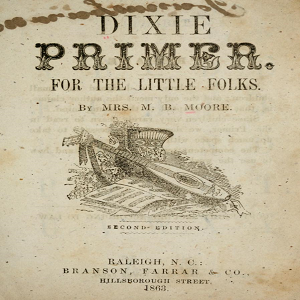Doctor Curmudgeon Oh, Where Have You Gone, Number 27?
By Diane Batshaw Eisman, M.D. FAAP Doctor Eisman is in Family Practice in Aventura, Florida with her partner, Dr. Eugene Eisman, an internist/cardiologist
It was around for quite some time.
Then—somewhere in the mid-1800s, it disappeared.
What disappeared? Well it was the ampersand–&–and it disappeared from the alphabet.
The ampersand had quite happily settled in right after Z. Proudly it held its place in the English alphabet, standing upright and curvaceous.
“The Dixie Primer, For the Little Folks,” by Mollie Bransom Moore was published in 1863. It includes the entire alphabet that was taught at the time. And there we find the ampersand immediately following the letter Z.
When reciting the alphabet… xyz… children were taught to say “and per se.” This phrase referred to the &. Somewhere around 1835, this elegant letter got its own name “And per se” had evolved into “ampersand.”
The ampersand is pretty old. It was around the first century that Roman scribes used the word “et” to represent “and.” Then, a few decades passed and the cursive combination of E and T merged to represent the ampersand symbol as we see it today.
Keith Houston wrote in the Financial Times, “ The first recorded example, a crude amalgam of the letter ‘E’ and ‘t’, was scratched onto a Pompeian wall only to be smothered by Vesuvius’ ash.” We don’t know when somebody had scratched this bit of graffiti. But Mount Vesuvius erupted in AD 79.
Why did that lovely letter or symbol lose its place after Z? Nineteenth century school children are likely to blame as one of the causes of its eviction from the alphabet. They were taught to name the letters of the alphabet and even had an alphabet song. So when they came to the well-shaped ampersand, they tended to quickly mumble, “and per se.” Their careless muttering may have been one of the reasons why the former 27th letter was turned into ampersand, and eventually kicked out of the alphabet.
Personally, I miss that 27th letter. But language and usage have a habit of changing.
Rita Mae Brown is a novelist who commented, that “Language is the roadmap of a culture. It tells you where its people come from and where they are going.”
And now the ampersand is no longer a member of the English alphabet, but a mere symbol representing ’and’ & it continues to be found in logos & in brand names, & entertainment groups & writing & other things.
(EDITORIAL NOTE FROM GALAHAD, SIBERIAN HUSKY: I AM THE EDITOR FOR DOCTOR CURMUDGEON’S LITERARY EFFORTS, BUT SHE HAD COMPLETELY IGNORED ME IN HER FINAL PARAGRAPH REGARDING THE CORRECT USAGE OF THE AMPERSAND)
Dr. Curmudgeon suggests “Bitter Medicine”, Dr. Eugene Eisman’s story of his experiences–from the humorous to the intense—as a young army doctor serving in the Vietnam War.
Bitter Medicine by Eugene H. Eisman, M.D. –on Amazon
Doctor Curmudgeon® is Diane Batshaw Eisman, M.D., a physician-satirist. This column originally appeared on SERMO, the leading global social network for doctors.
SERMO www.sermo.com
Click Here to Order Boxing Interviews Of A Lifetime By “Bad” Brad Berkwitt


